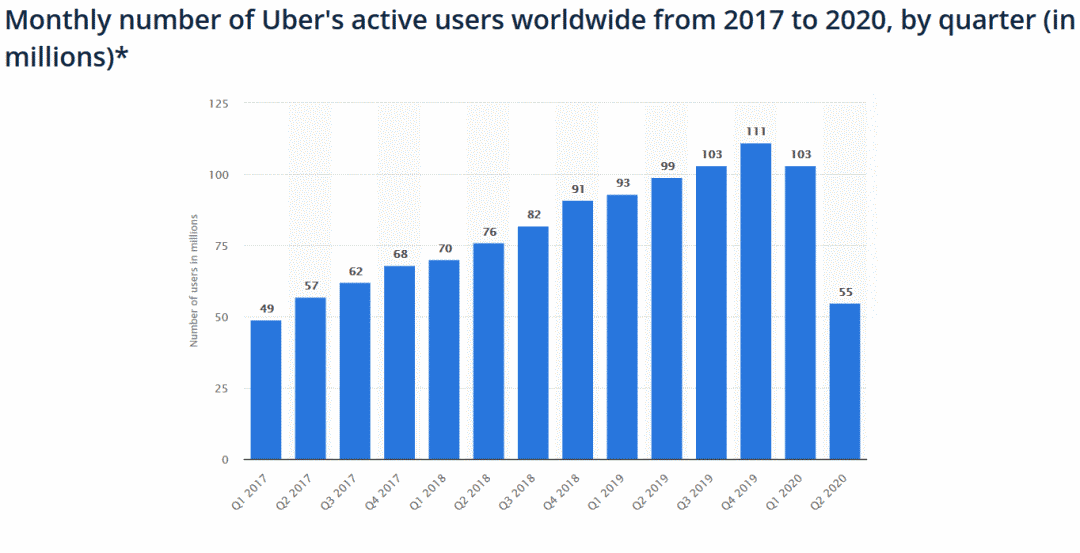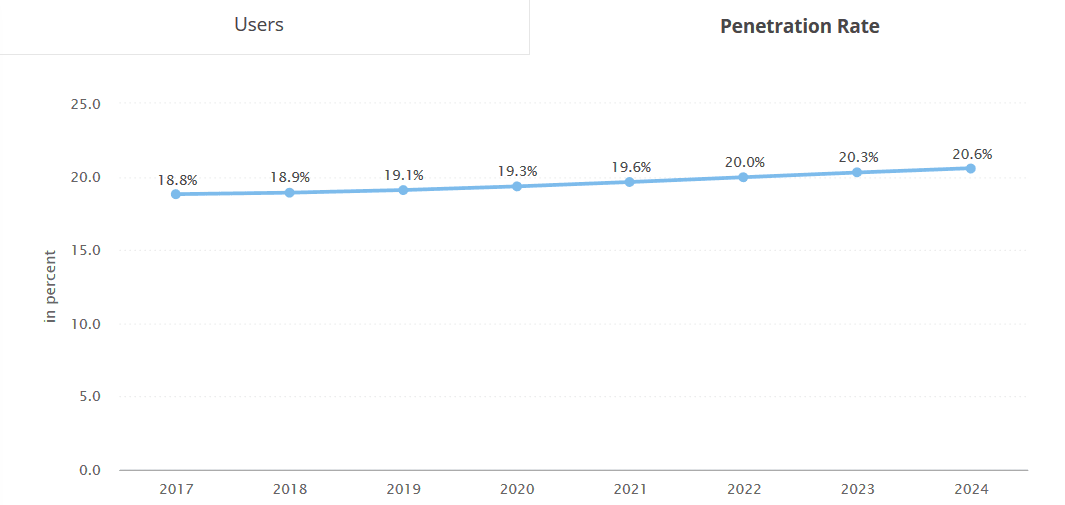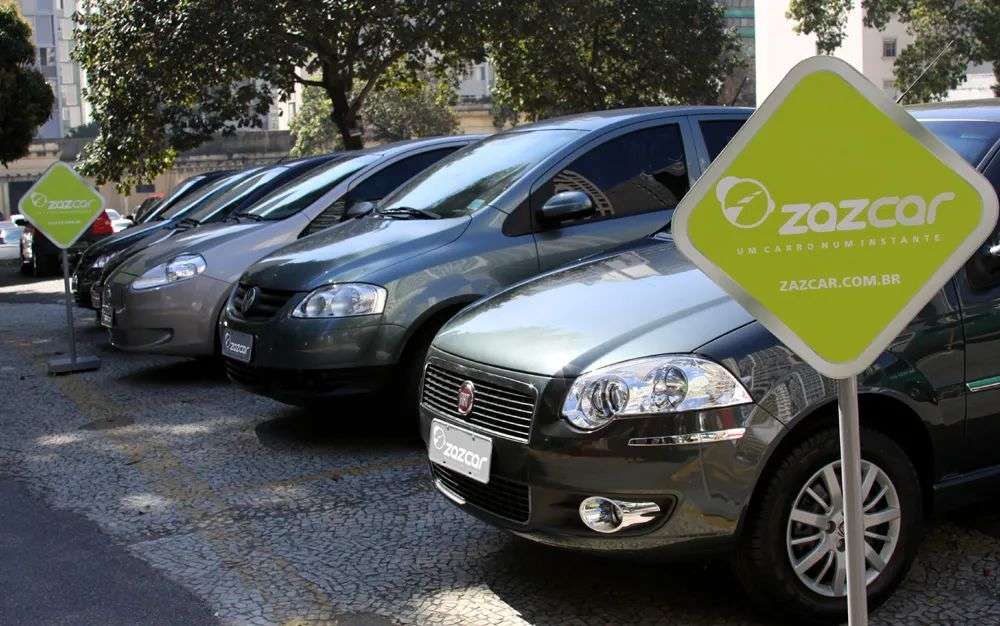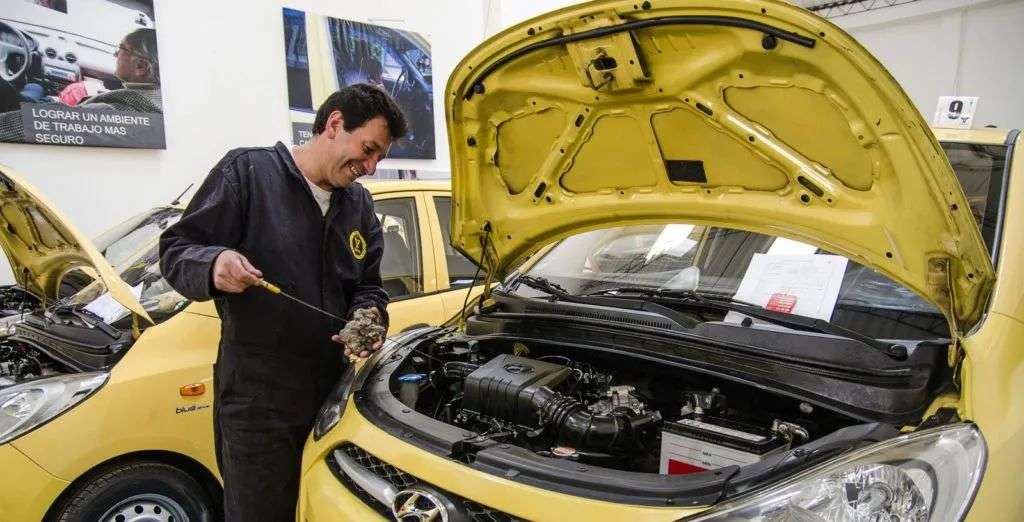With the explosive growth of local innovation and the heavy investment of international players, a series of digital solutions have emerged in the Latin American travel industry.
The overseas website is online! For more global business related information, please clickletschuhai.com
Editor’s note: This article is selected fromWeChatOfficial Account”Latin America Venture Capital Insight (ID: pvlatam) “, author: Peng Sisi, Ruo star , authorized reprint.
Urban traffic in distress
Due to some historical economic reasons, the urbanization rate in Latin America is not as high as in developing regions. As of 2020, 83% of Latin America’s 652 million people live in cities, which has spawned cities such as Mexico City (22 million people), Sao Paulo (21 million people), and Buenos Aires (15 million people). ) And Bogota (with a population of 10 million) and other world-class metropolises.
However, the development of public transportation in Latin America has been left far behind by the process of urbanization. Take Mexico City, the largest city, for example. The city’s urban area has a population of about 9.2 million, has 12 subway lines, and has an average daily capacity of 4.4 million passengers—almost the highest level of Latin American subways. However, the Tokyo metropolitan area, which has a similar population, has a daily capacity of 8.7 million subway trips, which is exactly twice that. In some cities, such as Bogotá, the first subway line will not open until 2028; the city’s proud BRT system currently has a capacity of only 2.5 million passengers per day.
A corner of São Paulo Metro Station
The public transportation system is backwardThe first result is an increase in the number of private cars. Brazil has 350 motor vehicles per 1,000 people in 2019, which corresponds to China’s data reaching 200 in 2020; Bogota, with a population of just over 8 million, has a staggering 2.3 million motor vehicles. The further consequence of this is blocking-the kind of blocking that makes people feel irresistible. A man who lives in the western suburbs of Mexico City goes to work in the city center and wastes 227 hours in his car due to traffic jams throughout the year. What’s more, surveys show that more than 30% of traffic flow in major Latin American cities is caused by car owners who cannot find parking spaces.
In general, large cities in Latin America are densely populated and have many vehicles, and the existing travel experience is extremely poor. Therefore, when the concept of shared travel began to emerge in the world, the online car-hailing platforms of various countries coincided with the blue ocean in the Latin American market. At present, Latin America is still the most active region for global car-hailing platforms, and each country has five or six platforms with market share. In addition to Uber in the United States, the main players in the entire region include Didi in China, Cabify in Spain, Easy Taxi in Brazil (acquired), Nekso in Canada, and Beat in Greece. At the same time, there are also some small and medium-sized platforms bred locally in various countries, such as Tappsi in Colombia and 99 in Brazil, but they have basically been acquired by the aforementioned large companies.
Beat’s Latin American methodology
Among the several major international platforms with fierce competition, Beat from Greece can be said to be unique. Greece is not a country with a well-developed Internet economy in the traditional perception; Beat was founded in 2011 when Greece was in deep economic crisis. It has grown from a regional start-up company to an online car-hailing company with 250,000 registered drivers in 5 Latin American countries. platform. In an interview in July 2020, Beat co-founder Nikos Drandakis explained the company’s various measures to deal with the new crown epidemic. We can also capture the mystery of Beat’s rapid development in the Latin American market to a certain extent.
Nikos Drandakis, Co-founder & CEO of Beat
Q: Can you tell us something about yourself, your occupation, and how you founded Beat?
I founded the first technology company in the late 1990s, and then I started many other projects. My first startup company was suppline.com, a B2B platform that helps companies order raw materials online. Within two years, suppline.com was acquired. Then, in 2006, I launched sync.gr, a blog-based social network application, which has been in operation until 2009.
My most recent venture was to establish Beat (formerly Taxibeat) with three co-founders, dedicated to building real-time, all-weather connections between millions of passengers and nearby drivers. Beat was founded in 2011-it was at the time of Greece’s worst economic recession in decades, but it has grown into Greece’s most popular taxi-hailing app and a famous entrepreneurial success story. Now it is also quite legendary. In 2017, Beat was acquired by Daimler Mobile Services.
In terms of international business, Beat is the fastest-growing ride-hailing application in Latin America, and it is also one of the most successful localization cases in the shared travel field in the region. Currently, we operate in 27 cities in the 5 largest Spanish-speaking countries in Latin America (Peru, Chile, Colombia, Mexico, and Argentina).
Q: How did Beat achieve innovation?
At Beat, we are committed to creating technologies that make urban life better. Nine years have passed since we were determined to provide better travel options for Latin American citizens; this journey has been full of challenges and gains.
We hire world-class talents to continuously upgrade our system; set up a technological innovation and engineering center in Amsterdam; and set up a dedicated team to work on machine learning and big data. We believe in the power of excellent teams-they can both find demand in the market and create demand for the market.
Innovation is at the core of all our work. As an app focused on Latin America, we have invested unprecedented energy in understanding the local culture and the needs of local drivers and passengers. We hope that Beat can provide personalized services to meet the different needs of different communities and provide fast, safe and cost-effective travel services.
Q: How has the new crown epidemic affected your company? How did you respondof?
The impact of the epidemic on people’s daily lives is huge, and most travel industries are inevitably affected, and we are no exception. In the first half of 2020, Beat’s business in all markets has shrunk by 80% to 90%. My team and I concentrated 100% of our energies to try and give a better response plan.
Due to the state of emergency, our offices and coordination centers around the world are unable to operate, and our services have to be temporarily suspended in most markets. However, from the first day we were affected by the epidemic, our top priority has changed to avoid layoffs as much as possible. I firmly believe that our company can survive the epidemic, and look forward to a very bright future after we get out of the crisis.
Q: Do you have to make some difficult choices in the process of responding to the epidemic? What experience or lessons did you learn from it?
To paraphrase Theodore Roosevelt’s words: “In a crisis, the best thing you can do is the right thing, the next best thing is the wrong thing, and the worst thing is to do nothing. “We all have to make a choice. In my opinion, the “right thing” is to preserve the capital that our company depends on for survival and development-mainly our employees.
The choice made by all other ride-hailing companies was to lay off 25% of the staff, and the rest to start over-this was the “wrong thing” for me. In order to retain all employees, we have adopted a series of complex measures from implementing a temporary voluntary salary reduction for a limited time to part-time work. Nevertheless, the hard work and selfless dedication of the team enabled us to resume full wages and full-time work one month earlier than expected.
Q: Who are Beat’s competitors? How do you plan to allow the company to maintain a competitive advantage in the market?
As a shared travel platform focusing on Latin America, we fundamentally believe in our ability to develop in Latin America. We are proud to be able to achieve a business model that combines internationalization and localization in all countries/regions. Keen resilience is our company’s specialty, and it is also our secret weapon to contend with larger global competitors. We will continue to devote ourselves to creating user-friendly apps and excellent service experiences to differentiate ourselves from other shared travel platforms in the region.
Our top priority is to maintain a combination of internationalization and localization in everything from product design to marketing. While other brands focus on the Asian, European and American markets, Beat provides services for the Latin American market where travel needs cannot be met based on its unique methodology, becoming one of the leading travel platforms in the region. We cherish the product-driven engineer spirit formed by the company in practice, carefully observe, strictly implement, and achieve the goal of providing users with efficient local travel services at a lower cost.the goal.
Shared travel, tens of billions of air outlets
For Chinese investors and entrepreneurs, a more familiar event may be Didi’s acquisition of Brazil’s largest ride-sharing company 99 for approximately US$1 billion in early 2018. At that time, 99 had more than 300,000 drivers and 14 million registered users in more than 400 cities in Brazil, all of which were collected by Didi. After that, Didi successively landed in Mexico, Colombia, Chile, Costa Rica, Panama and other countries and started localized operations. Before the epidemic, Didi had more than 2 million daily orders in the Latin American market, accounting for more than 20% of the local market, and contributing most of Didi’s overseas market revenue.
At present, Didi’s biggest competitor and the leading shared travel company in the Latin American market is Uber. Uber entered the Latin American market in 2013. Before the epidemic, it had 36 million active users in 16 countries and provided employment opportunities for more than 1 million drivers. Uber’s operations in Mexico are the most successful, almost monopolizing the country’s online car-hailing industry, making it the second largest market after the United States.
Uber’s global revenue status
In addition to these two giants, overseas platforms such as Cabify, Nekso and Beat are also gearing up in Latin America to expand their territory. In addition to the influx of international capital, supporting the rapid expansion of these companies is the solid foundation of the Latin American travel industry. From the perspective of global trends, the market size of shared travel will grow from US$61.3 billion in 2018 to US$218 billion in 2025 at an annual growth rate of 19.87%, and eventually reach US$300 billion in 2030. The situation in Latin America is that the total revenue of shared travel platforms will maintain an annual growth rate of 16.6%, reaching 1.017 billion US dollars in 2023-which is almost twice the amount in 2018, corresponding to a huge market of 16.5 billion US dollars. .
Compound annual growth rate of the shared travel market
Considering the continuing urbanization process in Latin America and the good Internet user base, it is not surprising that the shared travel industry can maintain long-term rapid growth. It is estimated that in the next ten years, the urbanization rate in Latin America will reach 90%, and the urban population will reach 711 million. While this has put more pressure on the local public transportation system and travel infrastructure that has been overloaded, it has also created an ideal environment for the rise of shared travel software that provides on-demand transportation services. In terms of informatization, Latin America has long been prepared for the digital revolution in the field of transportation. The latest data as of January 2021 shows that the Internet penetration rate of the entire Latin American region is around 70%, higher than the East Asian average of 68%; the mobile Internet coverage rate has also reached 63%, with an average daily online time of 5 hours. Another survey shows that a total of 45% of smartphone users in Latin America have used shared travel apps; Mexico ranks first in this indicator, with 58% of users who have used shared travel services. This shows that Latin American users have basically become accustomed to the business model of shared travel. On the other hand, it also means that the potential customer base is still huge and needs to be further explored by major platforms.
The Latin American market is embracing shared travel. This is not only reflected in the rapid growth of platform revenue and the gradual reversal of travel habits, but also in the construction and transformation of concepts. Based on the aforementioned shortcomings of over-urbanization, the younger generation in Latin America no longer accepts car ownership as a symbol of wealth and status, and instead seeks a more convenient and efficient travel experience. In addition, contrary to domestic perceptions, due to the characteristics of GPS positioning and full-process tracking, online car-hailing is considered to be a more reassuring travel option in Latin America. In Brazil, there has also been a special service for female customers and a focus on safety. And a private online car-hailing platform.
Multiple tracks, diverse competition
Of course, although the revenue from shared travel accounts for the bulk of the industry, it is still only a part of it after all. On other tracks in the Latin American travel industry, there are also many interesting companies-one of the representative areas is car sharing (car rental). Due to low income levels and high car-related crime rates, the development of car-sharing business in Latin America was once considered to be facing severe obstacles. But it was precisely in Brazil in 2009 that the developing world was bornThe first Internet car rental platform, Zazcar, is still successfully operating in Sao Paulo. Another country where a local car-sharing company was born is Mexico-the car rental platform Carrot appeared in Mexico City in mid-2012. Carrot only had three cars when it was launched, and it grew to a fleet of 20 cars in the first two months. As of January 2014, it had 60 cars and more than 3,000 members. From the very beginning, Carrot has positioned itself as an alternative way of travel for public transportation services, and thus has won the support of the local government and the public.
A car stop in Zazcar
If there is a shared car, then there must be a shared bicycle. Bike-sharing companies in Latin America started in Brazil and Chile in 2008, followed by Argentina and Colombia, and have expanded to Colombia, Venezuela, Ecuador, Uruguay and Mexico in the past ten years. The undisputed leader in this field is Grow Mobility, which was formed by the merger of the shared electric bicycle company Grin and the famous shared bicycle company Yellow in early 2019. It operates more than 135,000 vehicles in 6 countries. The company subsequently acquired FinTech startup Flinto, which is committed to building a complete shared travel ecosystem including online payment systems.
Grin and Yellow’s main business
When it comes to FinTech, there are also some insightful startups in Latin America focusing on the financial business behind shared travel. A typical representative is Taximo under Polymath Ventures. Taximo is a car leasing and financing platform, with branches in Colombia, Mexico and Peru, dedicated to providing financial support for drivers who are willing to join the shared travel industry but lack start-up capital and vehicles. The company has thoroughly studied the cash flow of drivers and developed an algorithm to predictThe profit and loss of driving a car, so as to give a tailor-made financing plan for each driver. If it is still difficult to repay the loan within the planned period, Taximo also provides refinancing options to ensure that drivers can continue to generate income.
Taximo helps the driver to manage the vehicle condition
To sum up, with the explosive growth of local innovation and the heavy investment of international players, a series of digital solutions have emerged in the Latin American travel industry. They have created a dynamic sharing economy and have significantly improved the quality of life of the middle class in big cities. They will continue to conquer the market in this tens of billions of dollars for a long time to come. In this process, companies will inevitably fail, and legends about new Internet travel giants will be born.
Let us wait and see.
LET’S CHUHAI CLUB Salon Event Preview
On April 15th, the first salon of LET’S CHUHAI CLUB, created by going overseas, will land in Shenzhen. This event will start from several hot topics such as brand going overseas, cross-border e-commerce, financial technology and overseas marketing, and discuss how Chinese companies going overseas can plan and move under the wave of globalization, and talk about current crises and challenges.
Welcome to scan the code to fill in the form and register for offline participation.












